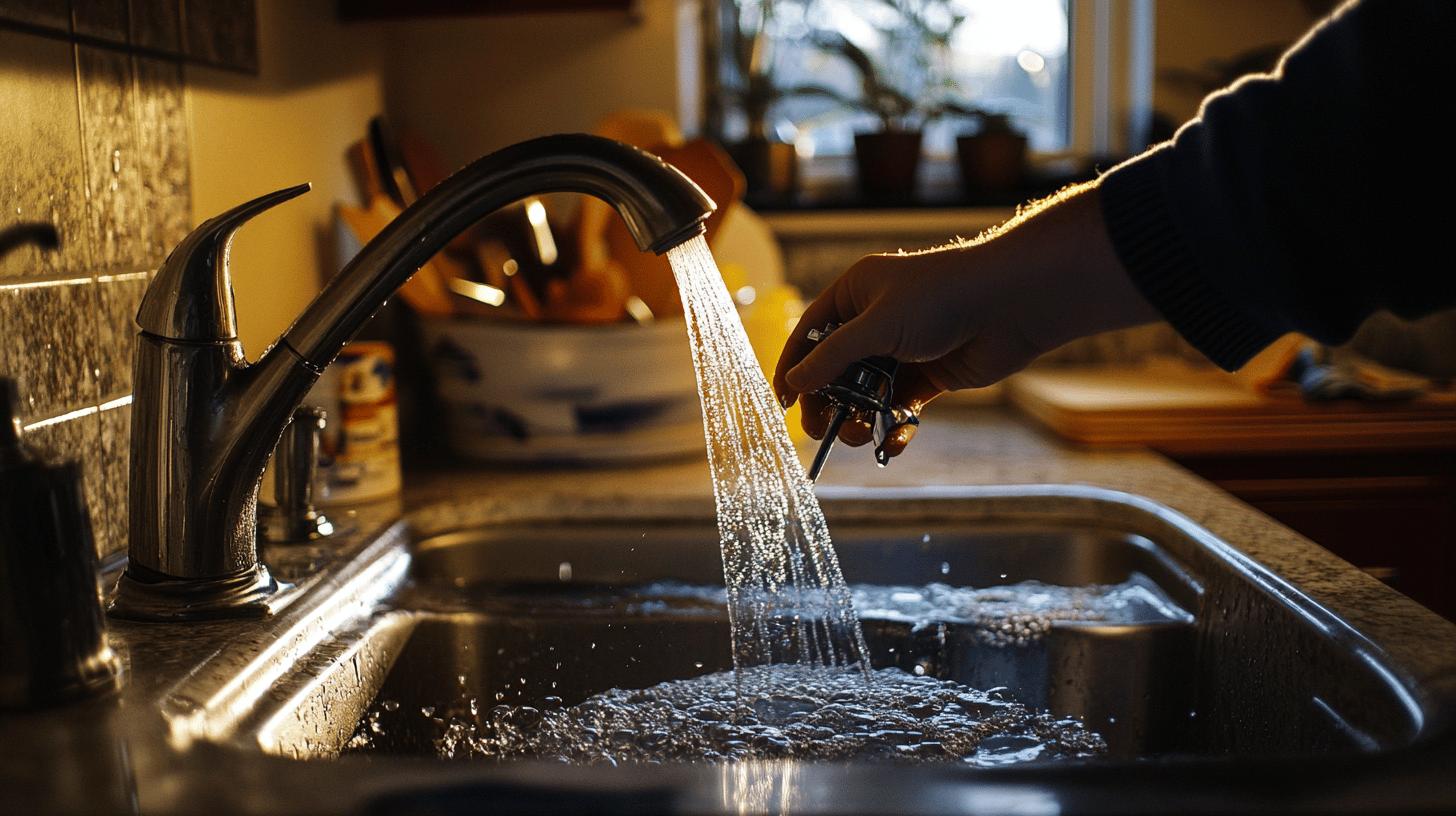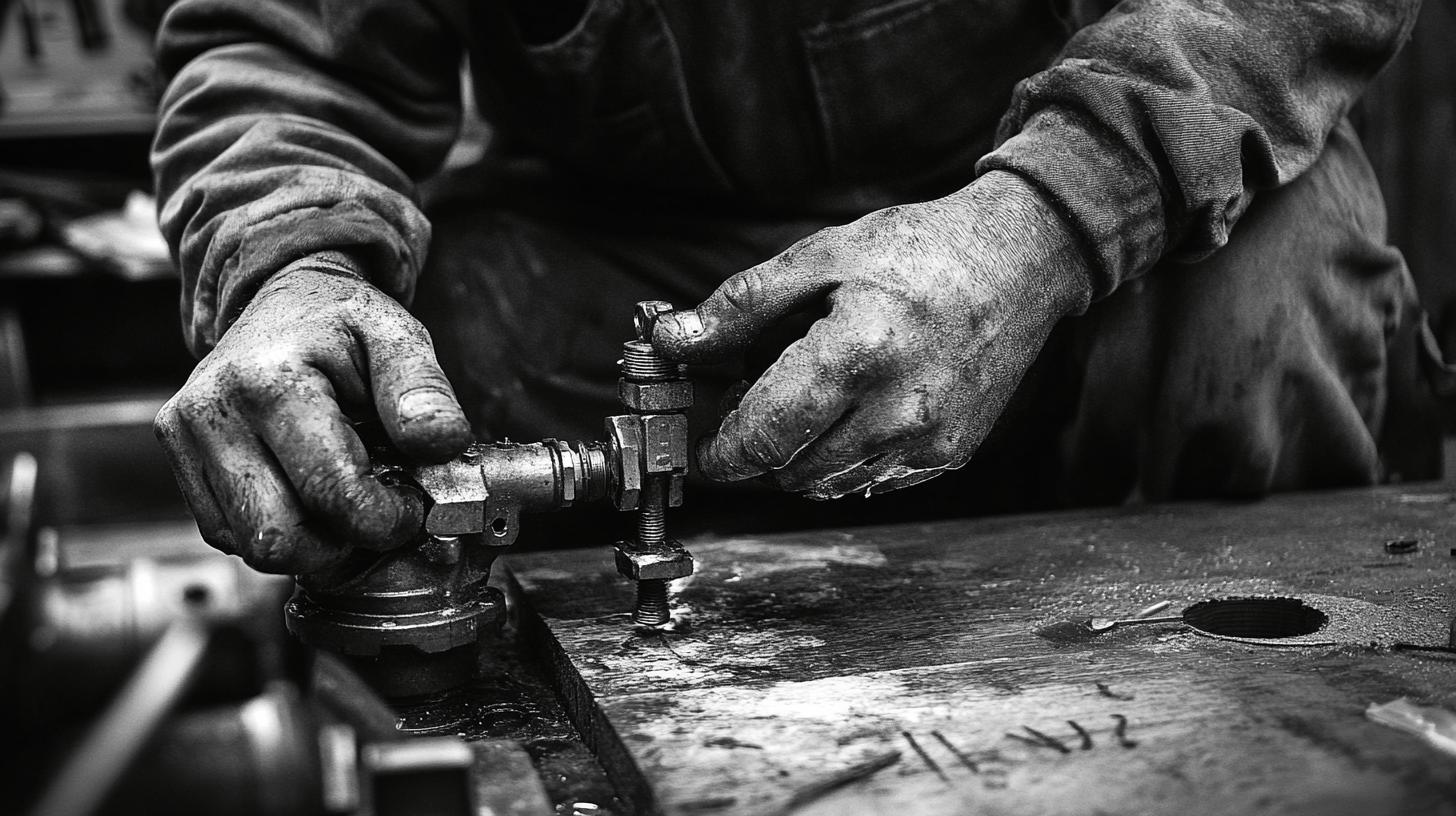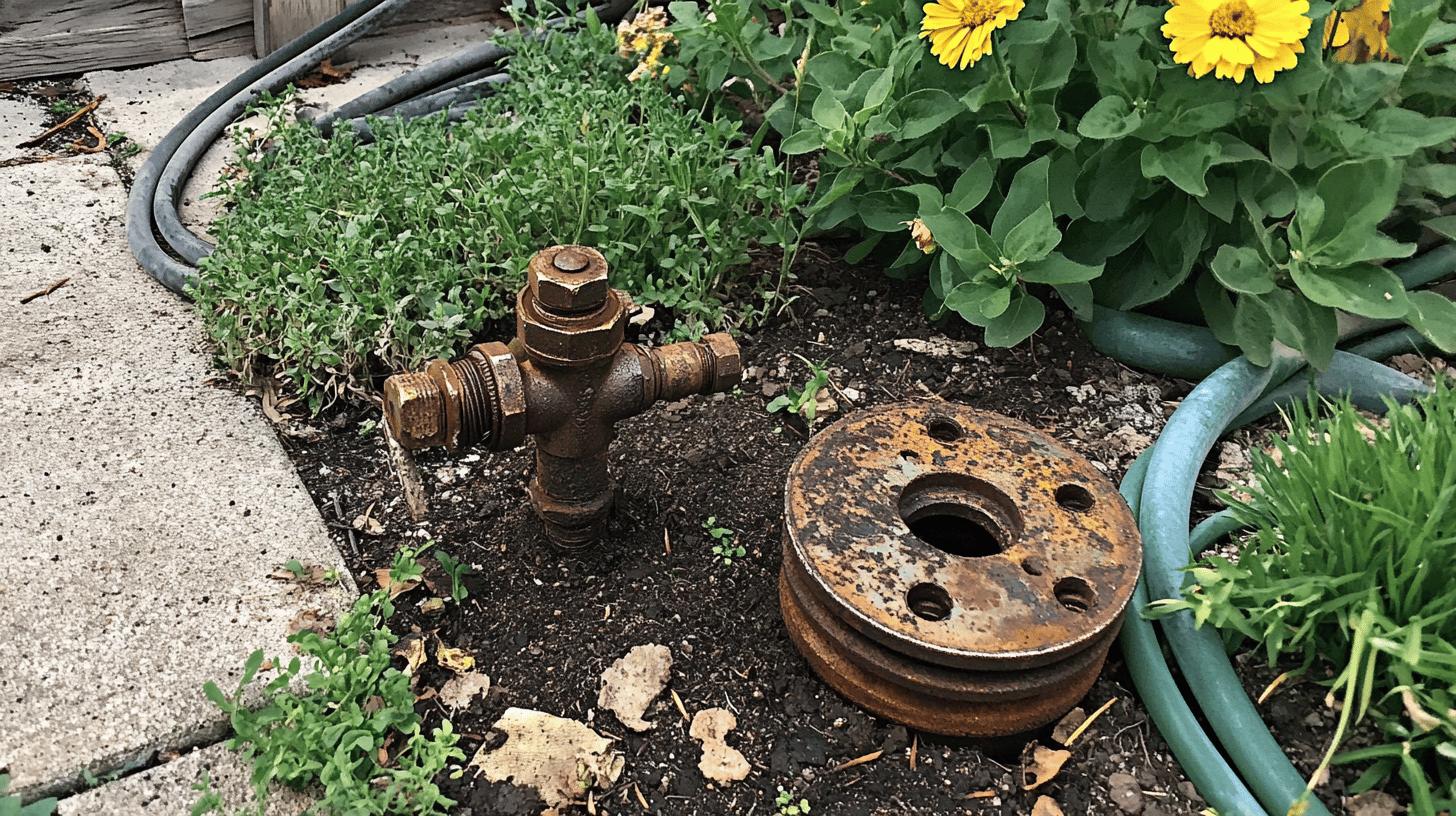TL;DR:
- Water shut off valves can clog due to:
- Mineral deposits
- Sediment buildup
- Debris from pipes
- Rust
- Corrosion
- Signs of clogs include:
- Reduced water pressure
- Water only from certain fixtures
- Complete water stoppage
- Uneven water flow
- Troubleshooting steps:
- Shut off main water supply.
- Inspect the valve.
- Disassemble the valve.
- Clean using a wire brush.
- Reassemble and test.
- Preventive measures:
- Regular inspections
- Routine maintenance
- Flush water lines
- Hire professionals for complex issues.
Ever turned on your faucet and only got a small trickle of water instead of a full stream? It could be a clogged water shut-off valve. These valves can get blocked by things like debris, mineral build-up, or sediment. Knowing what causes this and recognizing signs like low water pressure or uneven flow can help you avoid bigger plumbing problems. In this guide, we’ll explain why valves get clogged and give you tips on how to fix and maintain them. Stay on top of things and keep your plumbing working smoothly.
Understanding How Water Shut Off Valves Can Get Clogged
Water shut-off valves can get clogged easily from mineral deposits, sediment, and debris. Hard water minerals build up over time and block the valve, while sediment from the water source can settle inside. Debris from old pipes or municipal systems can also cause clogs.
Spotting the signs of a clogged valve early is important. The first sign is usually lower water pressure, which means something’s blocking the flow. Water may only come out of certain faucets, showing there’s a problem with the valve. In severe cases, the water might stop entirely or the pressure could change randomly.
Common causes of valve clogs include:
- Mineral deposits
- Sediment buildup
- Debris in water lines
- Rust
- Corrosion
Regular maintenance can lessen these issues, but if a valve clogs, you may need a professional plumber. They have the skills and tools to fix clogs and prevent further plumbing problems.
Identifying Signs of a Clogged Water Shut Off Valve

Yes, water shut-off valves can clog easily. Common signs include reduced water pressure, where the flow is weaker than usual. A complete stoppage means the blockage is serious. You might also notice uneven water flow or pressure changes, which point to a clogged valve. These issues can be a hassle and need to be addressed quickly.
To diagnose a clogged valve, start by checking the faucet aerator. Sediment and debris can collect there and make it seem like there’s a valve problem. Remove the aerator to see if there’s a blockage. Also, look at the connectors and supply lines for any clogs.
Symptoms of a clogged valve include:
- Reduced water pressure
- Water only from certain fixtures
- Complete water stoppage
- Uneven water flow
Spotting these signs early can prevent more issues and keep your plumbing efficient.
Causes of Clogs in Water Shut Off Valves
Yes, water shut-off valves can clog easily. The main causes are mineral deposits, debris buildup, and corrosion. Hard water can leave mineral deposits that block the valve, while debris from old pipes or plumbing systems can cause major blockages. These obstructions restrict water flow, lower pressure, and can damage the system.
Corrosion is another culprit, especially in older or poorly maintained systems. Rusty parts have rough surfaces that trap debris, leading to clogs, leaks, or even valve failure. In some cases, you may need a plumber for repair or replacement.
| Cause | Description |
|——————|————————————————–|
| Mineral deposits | Minerals accumulate, clogging the valve. |
| Debris buildup | Particles from water lines form blockages. |
| Corrosion | Rust damages parts, causing clogs. |
Regular checks and maintenance help prevent these problems. Addressing mineral buildup, removing debris, and monitoring corrosion ensure your water shut off valves work well when needed.
Troubleshooting and Clearing Clogged Water Shut Off Valves

To troubleshoot a clogged valve, start by shutting off the main water supply to prevent flooding or further damage. Once the water is off, check the valve for any visible debris or damage that could be blocking the flow, such as mineral deposits, rust, or sediment.
Next, carefully disassemble the valve, keeping track of the order of parts for reassembly. Use a wire brush to gently clean away any blockages, but handle everything carefully to avoid causing more damage. If the clog doesn’t clear up or there’s noticeable corrosion, it’s best to call a professional plumber. They can assess the situation and repair or replace the valve to ensure your plumbing runs smoothly.
Steps to clear a clogged valve:
- Shut off the main water supply.
- Inspect the valve for debris.
- Disassemble the valve.
- Use a wire brush to clear blockages.
- Reassemble securely.
- Test for normal water flow.
Preventive Measures and Professional Assistance for Valve Clogs
Water shut-off valves can clog, but taking preventive steps can minimize the risk. Regular maintenance is essential to avoid clogs and keep your plumbing in good shape. Periodic inspections help catch potential issues early, while routine valve cleaning removes debris and mineral deposits. Flushing your water lines regularly prevents sediment buildup and keeps everything flowing smoothly.
If you’re unsure about handling complex issues or routine maintenance, professional plumbers can step in. They fix problems quickly and efficiently, preventing water damage or system failures. If DIY attempts don’t work or you lack confidence, hiring a pro saves you time and ensures the job is done right.
Preventive tips include:
- Inspect valves for wear regularly.
- Flush water lines consistently.
- Clean valves during maintenance.
- Avoid excessive force on valves.
- Use professional services for thorough care.
By following these steps and knowing when to seek help, you can keep your water shut off valves working efficiently and reliably.
Final Words
Taking care of clogs in your water shut-off valves keeps the water flowing smoothly throughout your home. Spotting signs like reduced pressure or uneven flow early can help you diagnose issues before they get worse. Understanding the causes—mineral deposits, debris buildup, and corrosion—lets you take preventive steps to avoid clogs.
Regular inspections, maintenance like flushing lines, and cleaning valves are key to prevention. If simple troubleshooting doesn’t fix the issue, professional plumbers can step in to help.
By staying proactive, you can avoid the question of “Can a water shut-off valve get clogged?” and keep your plumbing running smoothly.
FAQ
How long can a water shut-off valve be clogged?
A water shut-off valve can remain clogged until it is cleaned or replaced. Sediment, mineral deposits, or debris can block the valve, leading to disrupted water flow.
How do you unclog a shut-off valve?
To unclog a shut-off valve, turn off the main water supply and disassemble the valve. Remove debris with a wire brush and reassemble the valve to restore water flow.
How to know if a shut-off valve is bad?
If a shut-off valve does not stop water completely, leaks, or doesn’t turn smoothly, it is likely malfunctioning and may need repair or replacement.
Why is there no water coming out of my tap when I turn it on?
If no water comes out of a tap, check if the shut-off valve is clogged, turned off, or if there’s an issue with the water supply.
How to fix a stuck water shut-off valve?
Fix a stuck shut-off valve by gently turning it back and forth. If it remains stuck, lubricate it and attempt to free it again. Consider replacement if unsuccessful.
What causes a water valve to remain open but no water flows?
A valve may be open with no water flow due to clogs from mineral deposits, debris, or issues elsewhere in the plumbing system. Inspect the valve and system.
What to do if a faucet doesn’t work after water shut off?
Check the faucet and valve for clogs or misalignment if no water flows after turning it back on. Inspect for debris or damaged parts.
Can corrosion cause a clogged valve?
Corrosion can lead to a clogged valve by deteriorating the valve’s components. Regular inspections help identify and prevent corrosion-related clogs.
How to prevent clogs in water shut-off valves?
Regularly inspect valves, flush water lines, clean valves during maintenance, use controlled force when turning, and consider professional plumbing assistance for upkeep.
Can’t turn the main water shut-off valve, what should I do?
If the main shut-off valve won’t turn, lubricate it and try again gently. If it remains stuck, consult a professional plumber for assistance.

